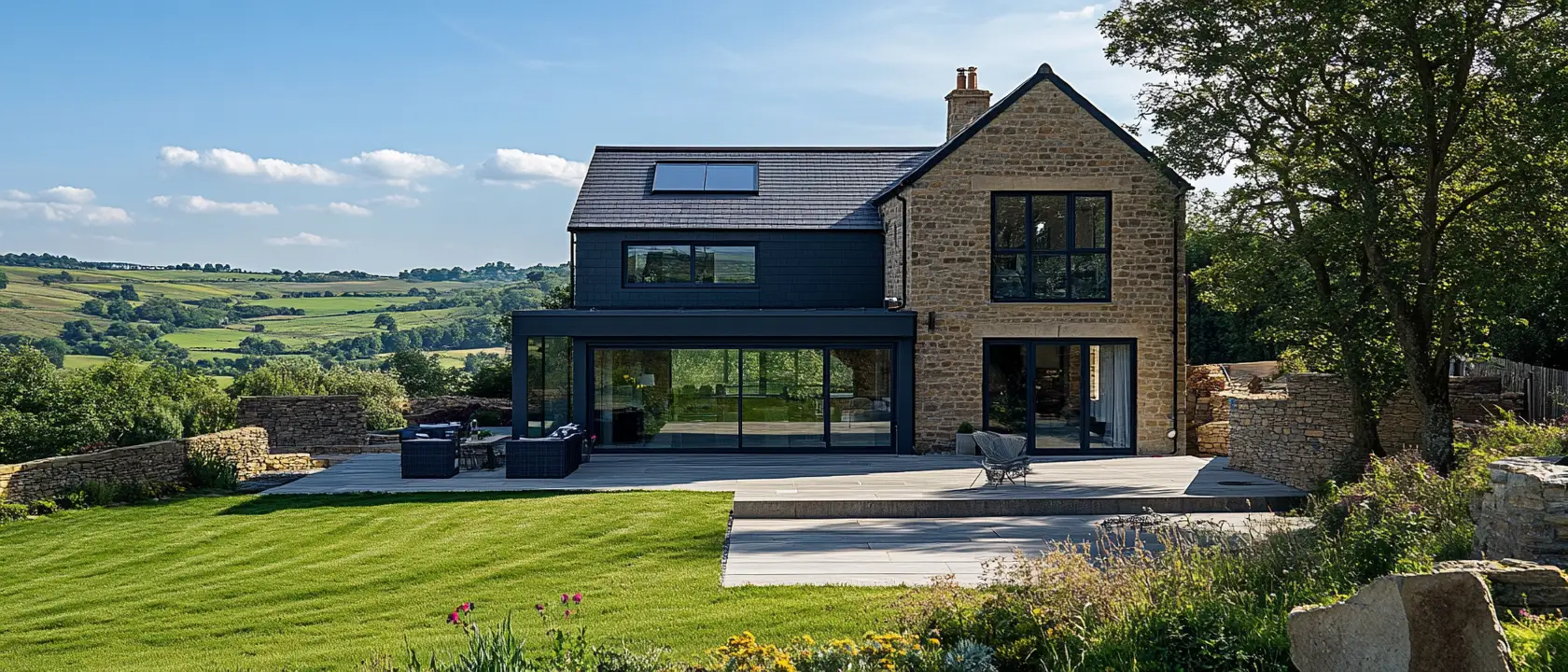When you’re in the market for a new home, deciding between a new-build property and an older home is one of the biggest choices you’ll make. New-build homes have become increasingly popular among first-time buyers and seasoned homeowners alike, offering modern living spaces with fewer maintenance concerns. With this rise in popularity, mortgage lenders have developed specialised mortgage products tailored to new-build purchases, providing unique benefits that are worth considering.

1. Lower Maintenance and Running Costs
One of the most attractive aspects of buying a new-build home is the fact that everything is brand new, from the roof to the plumbing and appliances. This means fewer repairs and lower ongoing maintenance costs compared to older homes, which may require more frequent upkeep.
New-build homes also tend to be more energy-efficient. Built with modern insulation, windows, and heating systems, these homes often comply with the latest energy-efficiency standards. As a result, you can expect lower utility bills, which reduces your overall living costs.
2. Customisation and Personalisation Options
Many new-build developments offer buyers the opportunity to personalise certain aspects of the property. Depending on the stage of the build, you may be able to choose your flooring, fixtures, kitchen cabinets, and even room layouts. This allows you to move into a home that reflects your personal taste without the need for renovations.
3. Incentives and Discounts
Housebuilders often provide incentives to encourage buyers to purchase new builds, and these can include:
- Stamp Duty contributions
- Help with legal fees
- Discounts on the asking price
Some developers also offer part-exchange deals, where they buy your existing property, helping you avoid the hassle of selling on the open market. These incentives can significantly reduce your upfront costs when purchasing a new-build home.
4. Access to Government Schemes
New-build homes are often eligible for government schemes designed to help buyers get on the property ladder. One of the most notable is the Help to Buy Equity Loan scheme, which allows first-time buyers to borrow up to 20% (or 40% in London) of the cost of a new-build home, interest-free for the first five years. This makes new-build properties more accessible to those who may struggle to save for a large deposit.
5. New Build Warranties and Guarantees
All new-build homes come with a 10-year warranty, typically provided by the National House Building Council (NHBC) or similar organisations. This warranty covers any major structural defects, providing peace of mind that your investment is protected. In many cases, mortgage lenders view homes with these warranties more favourably, which could make it easier to secure a loan.
6. Easier and Quicker Buying Process
Buying a new-build home can often be a more straightforward process than purchasing an older property. As there’s no upward chain, you’re less likely to face delays or fall-throughs. Many developers work closely with mortgage brokers and lenders, meaning you may be able to arrange your mortgage more smoothly through partnerships they already have in place.
7. Mortgage Products Tailored to New Builds
Because new-build homes have their own unique characteristics, mortgage lenders offer products specifically tailored to them. These mortgages may have slightly different terms, such as:
- Extended mortgage offers: Mortgage offers for new builds are usually valid for six months, but some lenders offer extensions up to 12 months to account for any construction delays.
- Lower deposit options: Some lenders offer lower deposit mortgages for new builds, particularly when using schemes like Help to Buy.
- Fixed-rate mortgages: With new builds, fixed-rate mortgages are often popular because they provide certainty over monthly payments, which is important for first-time buyers and those on tight budgets.

FAQ: Mortgages for New Build Homes
Q1: Do mortgage rates differ for new builds compared to older homes? Yes, mortgage rates for new-build properties can sometimes be slightly higher than for older homes. This is because lenders view new builds as a higher risk due to potential issues such as delays in construction or concerns about future value. However, special mortgage products are available for new builds, and government schemes like Help to Buy can help offset the cost.
Q2: How much deposit do I need for a new-build mortgage? For new builds, the deposit requirement can vary, but it typically ranges between 5% and 20% of the property’s value. Some lenders may require a higher deposit for new-build flats compared to houses, and this can also be influenced by your credit history.
Q3: Can I use Help to Buy for a new build? Yes, the Help to Buy Equity Loan scheme is specifically designed for new-build homes. It allows you to borrow up to 20% (40% in London) of the property’s value interest-free for the first five years, which can help reduce your initial mortgage amount.
Q4: How long does a mortgage offer last for a new-build home? Most mortgage offers for new builds are valid for six months, although some lenders may extend this up to 12 months if there are delays in construction. It’s important to check this with your lender to ensure your mortgage offer doesn’t expire before the home is ready.
Q5: What is covered by a new-build warranty? A new-build warranty, typically provided by NHBC or a similar body, covers major structural defects for up to 10 years. The first two years cover issues such as faulty plumbing, electrics, or windows, while the remaining eight years focus on structural integrity.





